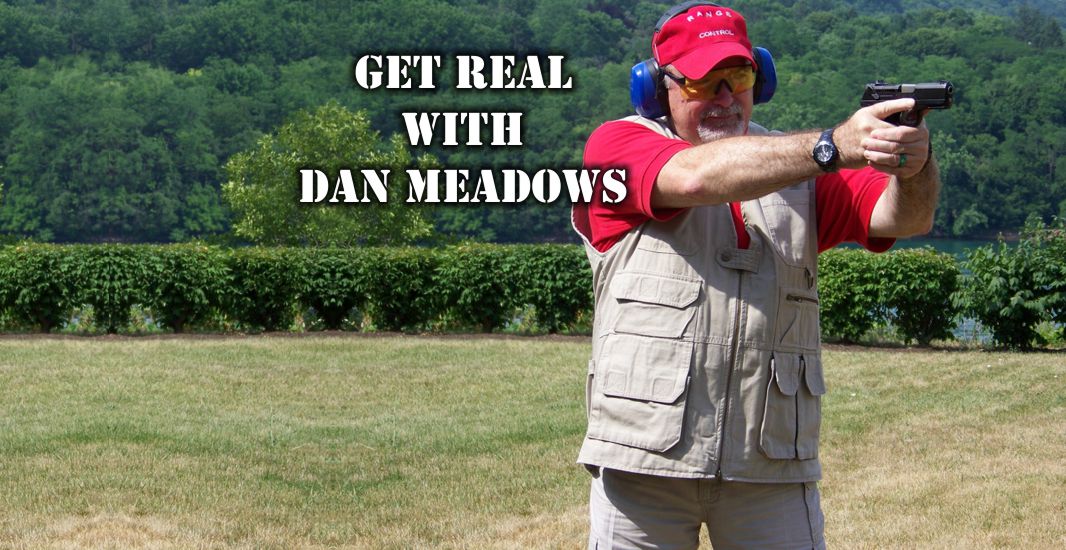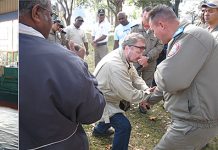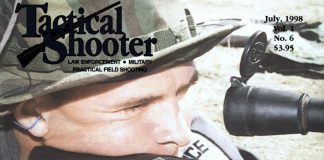Put it on Target: Range Safety and Marksmanship
1 – Familiarization with your Firearms
Know your firearms and read all the directions. That’s what I always say!
Sometimes this is a hard thing to do, and most of us will usually fail to read the directions as we should. As in most product manuals, the information contained therein is very important, both from a safety factor and to get the most out of your products use. As we all know, not all firearms are created equal, and yet many of us will treat them all as if they are alike.
Looking through an owner’s manual will help to familiarize a new or veteran shooter with specific details on the care, usage, maintenance, and service needs of their newly acquired firearm. It also gives us a resource of information to contact the manufacturer of the firearm, should we have any questions about its use, or if we need to have our firearms serviced by the company. Many times the owner’s manual will list customer service numbers or reputable and certified gunsmith / dealers in your area that are recommended by the manufacturer. Keep your directions in a safe place for easy recall and use, should the need arise.
2 – Gun Safety and Range Briefing
Safety First, Safety Always… At this point, I would recommend taking a firearms class (pistol, rifle or shotgun) from a certified and reputable firearms instructor and range safety officer. If this has been already accomplished, or if you have taken lessons from a knowledgeable friend or mentor, then I would also suggest that you continue to remember these “12 Safety Rules” while you are out at the range.
Here are the “12 Safety Rules” to stay safe by;
- Always keep the gun pointed in a safe direction.
- Always keep your finger off the trigger until ready to shoot.
- Always keep the gun unloaded until ready to use.
- Be sure the gun is safe to operate.
- Know how to use the gun safely.
- Use only the correct ammunition for your gun.
- Know your target and what is beyond.
- Wear the appropriate eye and ear protection.
- Never use alcohol or drugs before or while shooting.
- Store guns so they are not accessible to unauthorized persons.
- Be aware of any added safety precautions or state laws for transporting your firearms.
- Know and understand all range or safety rules for each range that you attend.
3 – Marksmanship & Sight-In Skills
Marksmanship skills will be developed through learning, repetition and practice. Attending classes and learning how to shoot from a qualified firearms instructor will go a long way by enhancing your knowledge, skills and abilities with a firearm. Your marksmanship fundamentals are;
- Grip
- Stance
- Sight Alignment / Sight Picture
- Trigger Control
- Follow Through
- Breath Control
- Shooting Rhythm
- Shooting Positions
In addition, develop a stable shooting platform, work on a maintaining balance, understand and use muscle memory, create dry firing and repetition drills, and always wear the right clothes and shoes while you are shooting. Working on your strong side and your weak side shooting skills helps to develop yourself as a well rounded shooter. Doing all of this will go a long way in helping you to “put it on target”.
Having knowledge and information about your gun sights, optics and lasers are nearly as important as knowing and using your firearms. Knowing your gear, knowing your sights, and knowing your firearms are all key to better shot placement, and of course the end results of being on target.
You should also know which eye is your dominant eye, and which eye is your non-dominant eye. This is crucial in understanding how best to use your sights, and where to place your sight alignment on your target. Sight Alignment, Sight Pictures and Multiple Target Engagements through a single eye, or dual eye periphery will help the shooter address and engage their targets better. Use both eyes open for multiple target engagements, and to increase their efficiency of movement while shooting.
As a shooter you need to know, understand and maintain correct sight alignments, and use your sights capabilities always to your advantage, as a shooter.
4 – The Shoot: “Put It On Target”
Engaging your target or targets is only the beginning, and in most cases it is the easiest thing to do while on the range. However maintaining a consistent pattern and shot placement is a bit more difficult for most shooters to do. In order to effectively “put it on target” a shooter needs to follow all of the marksmanship fundamentals written above. Tightening up of your shot groups, hitting the X-Ring, working through the recoil and displacement recovery, and further re-establishing yourself back onto the target can be a challenge. To “put it on target” a shooter must create a “whole marksmanship package”, sending the round or rounds downrange to its designated targets, then delivering the goods (rounds) to the right address (the X-Ring). A “lot of practice” at the range will help the shooter put tight groupings on target, and a lot of well placed holes in the “X-Zone”, consistently!
5 – Drill Me Once, Drill Me Twice
Shooting Drills are tedious, challenging, stressful, necessary, and are otherwise a requirement to be a “Good”…No-No wrong word to use here, a “Damn Good Shooter”! Shooting drills, dry-firing drills, malfunction drills, stress drills, reloading drills, scenario drills, marksmanship drills are “all” way too important to not include them into your shooting regime. So shooters, if you are only putting up a target on the gun range, box loading your ammunition into your gun, fumbling around with your firearm, and then plinking a few rounds downrange… Well then, I must be preaching to the wrong choir here!
However, if as a shooter you simply don’t know how to perform these drills, I suggest that you should seek out a certified firearms instructor who can place you onto the right pathway of shooting excellence. Like me for instance!
6 – Did Someone Say Practice
Practice, practice, practice and oh yes, practice some more. I hear it all the time! “I don’t have the time”, “I don’t have the money”, “My husband won’t let me get out of the house and go to the gun range”, I can’t find any ammo”! Ok, so maybe the last one about ammo is valid, but what about the other excuses?
As a shooter and as an instructor, I’ve heard it all. And yes sadly, most all of these excuses are in fact valid ones. Sometimes it’s hard to get away and to spend our limited monies to partake in some recreational shooting. So what about buying yourself a .22 caliber Rifle or Pistol? You can even get a .22 caliber rifle with an AR15 platform to shoot, if you so desire. It’s much cheaper, and it keeps you in that much needed practice zone. Then, go to the range when you can. Save up some money, do without something you may not really need, and then try to get out to the range as often as possible. You should also take the time and support your gun ranges and gun clubs as much as possible. In the mean time, you can still practice with a “SAFE” and “UNLOADED” firearm at home by doing dry-firing drills, muscle memory drills and much more.
Of course, the flip side of practicing is NOT practicing. For some of you who carry a firearm, like the AR15, or a Duty Pistol, this lack of practice can be very dangerous for you as an officer. For those shooters who are concealed carry holders, practice with your carry holster and the clothing you would wear out in public. And by all means everyone, do it for yourself and for others. Find the time to go out and practice, often!
The Parting Shot
Range safety and marksmanship development is a constant. We will either commit ourselves to the tasks of bettering our shots and our marksmanship skills, or we will fail to achieve our next level of marksmanship excellence.
Learn, shoot and practice often everyone. You’re just a bullseye away from being a great shooter.
TAP3X website at: TAP3X Group of Companies






